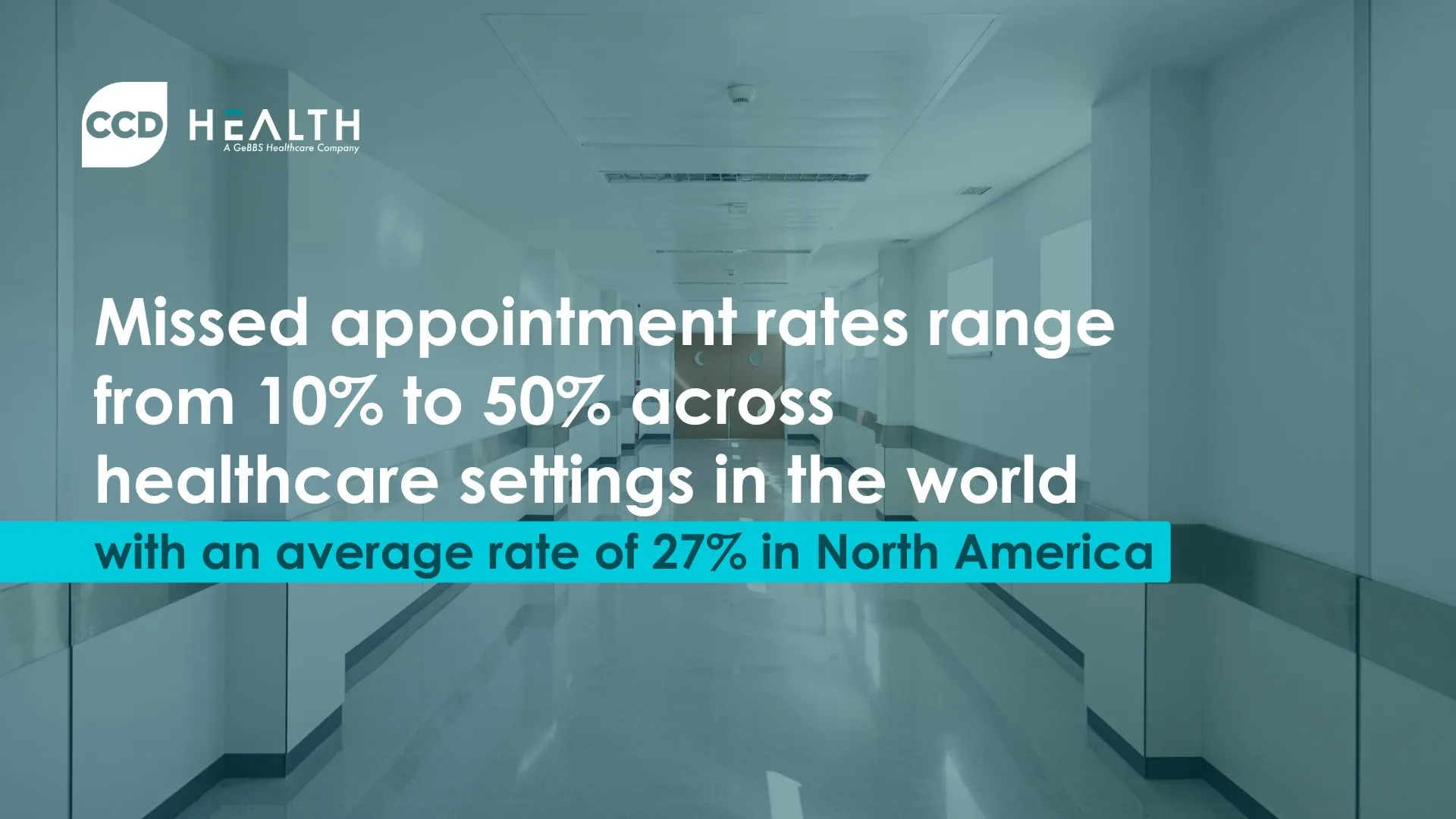How Radiology Centers Will Reduce No-Shows & Recover Revenue in 2025

Discover how top Radiology Centers leverage cutting-edge strategies to reduce no-shows and recover revenue in 2025. Explore patient engagement, scheduling solutions, and success stories.
No-shows are still the leading cause of revenue loss for Radiology Centers. Some (37%) state no-show rates have increased. Others (52%) say it has stayed the same.
While effective scheduling can give a Radiology Center tons of booked appointments, it can’t guarantee patients will actually show up.
However, large radiology centers have found a way to work with all the variables involved when predicting no-shows in order to lower their current rates and prevent losing revenue.
From leveraging advanced patient engagement solutions to implementing intelligent scheduling algorithms, we’ll break down the actionable steps that have led to tangible improvements in 2025 regarding no-show rates.
Challenges Radiology Centers face with no-show appointments
No-show appointments have long been a concern for healthcare providers, but they hold a particular significance for radiology centers. Radiological procedures often require specialized equipment and skilled professionals, making it crucial for patients to keep their appointments. When patients fail to show up for their scheduled imaging tests, it results in various issues:
Wasted resources
Radiology centers invest in expensive equipment and highly trained staff. These resources will be used when patients show up, leading to inefficiencies and wasted costs.
Loss revenue
Missed appointments directly translate into lost revenue. Radiology centers rely on a steady stream of patients to maintain their financial health.
Delayed diagnosis
No-shows can lead to delays in diagnosis and treatment, potentially impacting patient outcomes.
Poor patient experience
Repeated no-shows can frustrate staff and other patients, leading to a negative healthcare experience.
Now that we understand the challenges posed by no-shows let’s explore how top radiology centers can tackle this issue and recover lost revenue.
Source: National Library of Medicine
How Radiology Centers are reducing no-show appointments in 2025
1. Implementing Wave Scheduling
Wave scheduling remains one of the top scheduling methods for radiologists since it leaves aside the rigid time-block scheduling and instead focuses on appointment-duration standards.
Different radiology modalities will require more or less time. Since radiologists can’t predict which patient will take 25 minutes or an hour or which patient will fail to show up on time or not at all, they can allow themselves a more flexible scheduling method that lets them adapt to each unique study without having to speed it up and always keeping a patient in line for a subsequent appointment.
Wave scheduling enables radiology centers to synchronize appointments more efficiently. Grouping patients into waves reduces gaps in schedules and also ensures:
- Reduced waiting times
Patients often cite long waiting times as a reason for missing appointments. With wave scheduling, radiology centers can minimize waiting times, enhancing the patient experience and reducing the likelihood of no-shows.
- Better patient communication
Radiology centers use wave scheduling to send automated reminders and instructions to patients, ensuring they are well-prepared for their appointments.
- Flexibility for patients
Wave scheduling allows for greater flexibility, accommodating patients’ preferences for appointment times. This adaptability makes it easier for patients to schedule and attend their radiology appointments.
- Optimized resource allocation
Radiology centers can guarantee fewer no-shows and that equipment and staff are utilized fully, leading to improved revenue.
- Staff satisfaction
A well-organized schedule leads to reduced stress for radiology staff. This, in turn, improves job satisfaction and can positively impact patient care.
2. Strategic patient overbooking
Overbooking can (and is) one of the top strategies Radiology Centers use to reduce no-shows.
Increasing patient access and resource utilization are just some of this method’s top benefits. However, Naive Overbooking can lead to outnumbered staff and poor patient experiences.
Turning overbooking into an effective strategy that can genuinely reduce no-show rates without increasing wait times or decreasing quality, requires a plan:
- Anticipate a certain percentage of no-shows and plan accordingly. Establish overbooking thresholds based on the analysis. These thresholds should consider your Center’s actual no-show rate and resource capacity.
- Train staff to efficiently manage overbooked schedules, ensuring a smooth patient flow and minimal disruptions.
- Continuously monitor and adjust overbooking thresholds based on real-time data. Flexibility is key to optimizing this strategy.
Consider a radiology center that typically schedules 20 MRI appointments daily in a real-world scenario. However, their historical data shows a no-show rate of 20%. They strategically overbooked by 10% to enhance ROI, scheduling 22 patients per day. With effective reminders and well-trained staff, they ensure that most slots are filled, resulting in reduced downtime and increased revenue.
Strategic patient overbooking offers several advantages for radiology centers:
- Fewer patient no-shows
Overbooking takes into consideration the expected no-show rate, ensuring that the radiology center remains fully occupied even if some patients cancel or fail to appear. This minimizes revenue loss due to empty appointment slots.
- Increased revenue
Strategically overbooked schedules can significantly boost revenue without compromising patient care. The optimized patient flow ensures that the radiology center operates at its full potential.
- Competitive advantage
Radiology centers that implement strategic patient overbooking gain a competitive edge by offering faster appointment availability and improved resource management compared to their counterparts.
3. Using a no-show predictive model
How a Predictive No-show Model helps radiology centers recover revenue
Predictive no-show models rely on vast amounts of historical data to identify patterns and trends related to patient no-shows. This data-driven approach gives radiology centers valuable insights into the factors contributing to no-shows, enabling them to make informed decisions.
- Asses (the real) risk of a patient no-show
These models assign a risk score to each appointment based on various parameters, such as patient history, appointment time, and location. This risk assessment helps radiology centers identify appointments at a higher risk of no-shows. Radiologists can then allocate resources and staff more efficiently to manage these appointments.
- Set appointment reminders
One of the primary reasons for patient no-shows is forgetfulness or scheduling conflicts. Predictive no-show models enable radiology centers to implement proactive appointment reminder systems. Patients receive reminders via SMS, email, or phone calls, reducing the likelihood of them forgetting or missing their appointments.
- Allocate resources
Radiology centers can allocate their resources more efficiently, including equipment and staff, and ensure that the necessary resources are available and that staff is prepared for potential no-shows, reducing downtime and maximizing efficiency.
- Improve communication
Centers can engage in proactive discussions with patients about their appointments, address concerns, and offer flexibility in rescheduling. This patient-centered approach fosters a sense of trust and responsibility, reducing the likelihood of no-shows.
- Prevent revenue loss
Minimizing the number of missed appointments helps centers reduce revenue loss and optimize operational costs, ultimately leading to improved financial sustainability.
- Improve and optimize
These models are not static but evolve as new data becomes available. Radiology centers can continuously refine their predictive algorithms, making them even more accurate in identifying patients at risk of no-shows. This commitment to improvement ensures a proactive stance against patient no-shows.
Final thoughts
The success of radiology centers in reducing no-show rates doesn’t just benefit the bottom line—it improves patient experiences and ensures timely diagnoses and treatments. By prioritizing patient engagement and implementing these proven strategies, radiology centers can pave the way for a more efficient, patient-centered healthcare system where every appointment counts.




